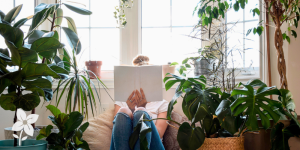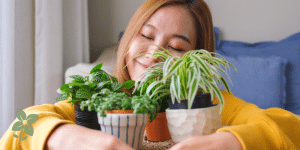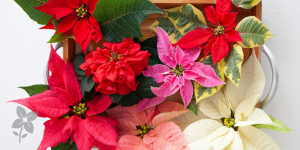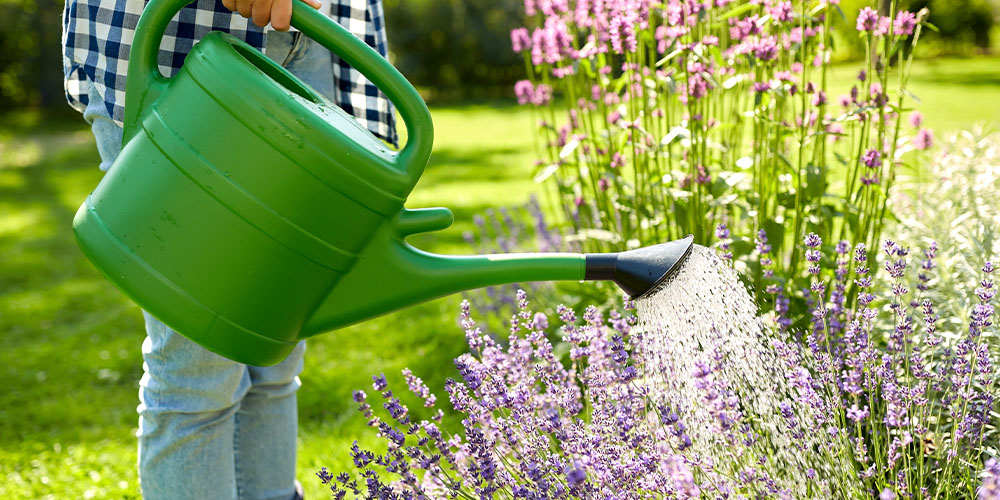
Proper watering is absolutely essential if you want to grow healthy plants. If your watering is sub-par, it doesn’t matter if your plants are getting the perfect amount of sun, plenty of fertilizer, or any other bells and whistles. Underwatering is bad, and overwatering is even worse! You have to find that happy medium. Learning the basics of watering for all types of plants””in the garden and indoors””will help you become a much better plant parent!
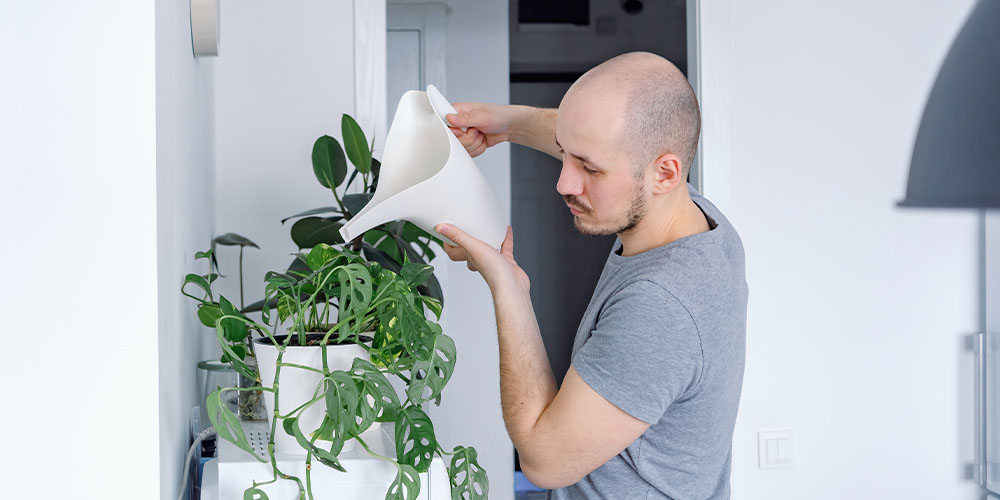 The Basics of Watering Houseplants
The Basics of Watering Houseplants
One of the most common issues with watering houseplants is overwatering. If you water too much and your container doesn’t have drainage holes, that water will collect in the bottom and get funky; this can lead to root rot, fungus gnats, and other nasties that threaten your plants’ delicate root system. Choosing plant pots with drainage holes will always make watering houseplants easier. You can also put your plant in a plain pot with drainage holes, then place it inside a prettier pot with no holes.
When you water your plants, you want to soak the root ball on all sides thoroughly””a little sip of water every day won’t cut it. Water around the base of your plant, from edge to edge of the pot. Depending on your chosen houseplant variety, it will have different preferences for watering frequency. Succulents and cacti prefer their soil to dry out completely before watering, whereas water-loving plants like ferns like consistently moist soil. Many plants fall somewhere between and prefer the first couple inches of soil to dry out before watering again.
In winter, houseplants go dormant, and their growth slows to conserve energy for the following spring. During this time, they need less water, so you can reduce the frequency by a few days for moisture-loving plants. Water around once every 2″“3 weeks for plants that prefer dry soil.
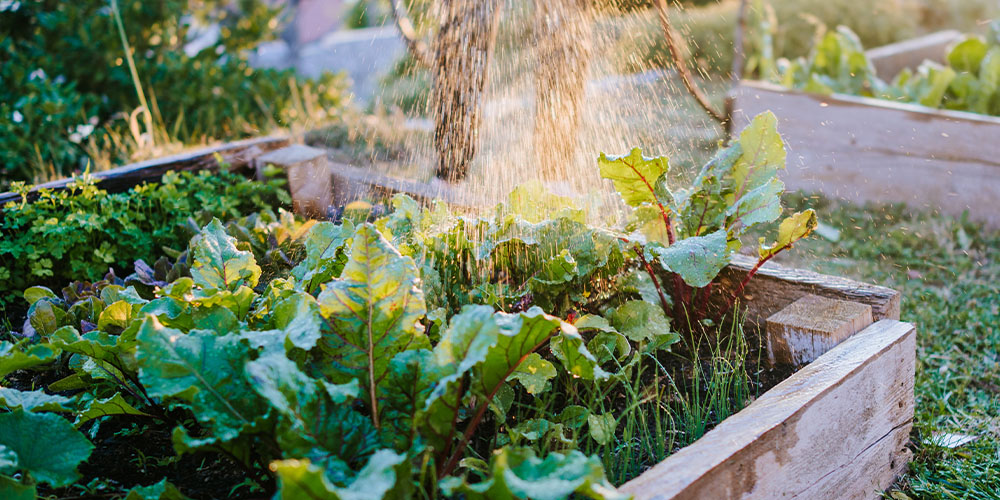 The Basics of Watering Garden Beds
The Basics of Watering Garden Beds
Watering in the garden is different because you’re working with the outdoor elements, plus a much larger soil reservoir. Ensuring your soil is loose and full of organic matter will help soil drain properly, preventing root rot. Of course, the watering frequency will depend on our weather. If it’s raining a lot, there’s no need for extra water. On the other hand, if we’re going through a hot, dry spell, you’ll need to water more. Spreading a layer of mulch across the soil will reduce the need for frequent watering during summer because it blocks the hot sun from heating the ground and evaporating its moisture reserves.
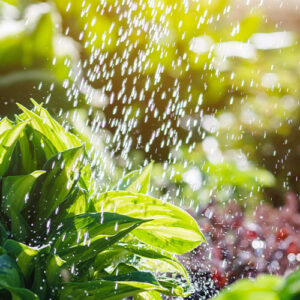
Most garden beds need about one inch of water per week, but this can depend on what kind of plants you’re growing. Some are more drought-tolerant, and others like things moist! Choosing plants with similar watering requirements will make it much easier to keep your garden healthy and thriving. If a cactus and a fern are in the same garden bed, it will be hard to keep them both satisfied!
For best results, water first thing in the morning before the sun has warmed up the soil; this will protect the plants’ roots, enveloping them with cool moisture. If you water when the earth is super hot, that moisture will dry up much quicker, and you run the risk of that moisture heating up in the sun and scalding your plants.
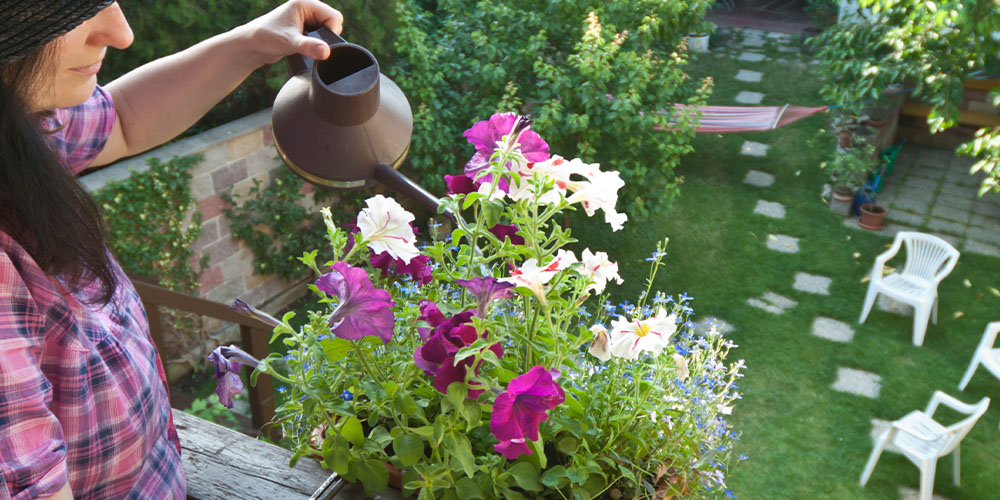 The Basics of Watering Container Gardens
The Basics of Watering Container Gardens
Watering container gardens combines indoor potted plant care and outdoor garden care principles. Again, you’re dealing with the elements, so if it’s rainy, you can hold off on watering. However, the soil in containers will dry up much faster than the soil in a garden bed, so during the hottest summer months, you may need to water as often as every day. Mulch will help maintain moisture reserves for longer.
Pots with drainage holes can help prevent overwatering, but the risk is much lower in outdoor container plants. When watering, use the same technique as with houseplants””water all around the base of the plant, edge-to-edge of the pot, so the root ball is well saturated without being totally waterlogged.
We hope our Alberta watering guide will help you nail down the basics of keeping your plants happy and hydrated! Feel free to contact us with questions about overwatering, underwatering, and everything in between.

